db/ db Mice Exhibit Features of Human Type 2 Diabetes That Are Not Present in Weight-Matched C57BL/6J Mice Fed a Western Diet
- PMID: 29038790
- PMCID: PMC5606106
- DOI: 10.1155/2017/8503754
db/ db Mice Exhibit Features of Human Type 2 Diabetes That Are Not Present in Weight-Matched C57BL/6J Mice Fed a Western Diet
Abstract
To understand features of human obesity and type 2 diabetes mellitus (T2D) that can be recapitulated in the mouse, we compared C57BL/6J mice fed a Western-style diet (WD) to weight-matched genetically obese leptin receptor-deficient mice (db/db). All mice were monitored for changes in body composition, glycemia, and total body mass. To objectively compare diet-induced and genetic models of obesity, tissue analyses were conducted using mice with similar body mass. We found that adipose tissue inflammation was present in both models of obesity. In addition, distinct alterations in metabolic flexibility were evident between WD-fed mice and db/db mice. Circulating insulin levels are elevated in each model of obesity, while glucagon was increased only in the db/db mice. Although both WD-fed and db/db mice exhibited adaptive increases in islet size, the db/db mice also displayed augmented islet expression of the dedifferentiation marker Aldh1a3 and reduced nuclear presence of the transcription factor Nkx6.1. Based on the collective results put forth herein, we conclude that db/db mice capture key features of human T2D that do not occur in WD-fed C57BL/6J mice of comparable body mass.
Figures
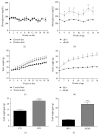
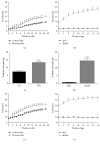

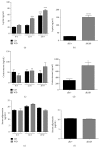
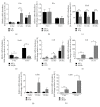
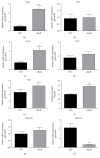
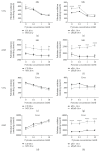
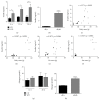
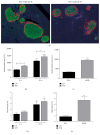
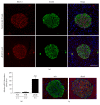
Similar articles
-
Experimental evidence for the use of CCR2 antagonists in the treatment of type 2 diabetes.Metabolism. 2013 Nov;62(11):1623-32. doi: 10.1016/j.metabol.2013.06.008. Epub 2013 Aug 15. Metabolism. 2013. PMID: 23953944
-
The metabolic consequences of 'yo-yo' dieting are markedly influenced by genetic diversity.Int J Obes (Lond). 2024 Aug;48(8):1170-1179. doi: 10.1038/s41366-024-01542-2. Epub 2024 Jul 3. Int J Obes (Lond). 2024. PMID: 38961153 Free PMC article.
-
The PGE2 EP3 Receptor Regulates Diet-Induced Adiposity in Male Mice.Endocrinology. 2016 Jan;157(1):220-32. doi: 10.1210/en.2015-1693. Epub 2015 Oct 20. Endocrinology. 2016. PMID: 26485614 Free PMC article.
-
Diabetes and cancer: two diseases with obesity as a common risk factor.Diabetes Obes Metab. 2014 Feb;16(2):97-110. doi: 10.1111/dom.12124. Epub 2013 Jun 12. Diabetes Obes Metab. 2014. PMID: 23668396 Free PMC article. Review.
-
Are TallyHo Mice A True Mouse Model for Type 2 Diabetes and Alzheimer's Disease?J Alzheimers Dis. 2019;72(s1):S81-S93. doi: 10.3233/JAD-190613. J Alzheimers Dis. 2019. PMID: 31424406 Review.
Cited by
-
Red Pepper (Capsicum annuum L.) Seed Extract Improves Glycemic Control by Inhibiting Hepatic Gluconeogenesis via Phosphorylation of FOXO1 and AMPK in Obese Diabetic db/db Mice.Nutrients. 2020 Aug 23;12(9):2546. doi: 10.3390/nu12092546. Nutrients. 2020. PMID: 32842462 Free PMC article.
-
Anacardium occidentale Bark as an Antidiabetic Agent.Plants (Basel). 2022 Oct 7;11(19):2637. doi: 10.3390/plants11192637. Plants (Basel). 2022. PMID: 36235503 Free PMC article.
-
Licorice Extract Isoliquiritigenin Protects Endothelial Function in Type 2 Diabetic Mice.Nutrients. 2024 Sep 19;16(18):3160. doi: 10.3390/nu16183160. Nutrients. 2024. PMID: 39339760 Free PMC article.
-
Autophagy positively regulates Wnt signaling in mice with diabetic retinopathy.Exp Ther Med. 2021 Oct;22(4):1164. doi: 10.3892/etm.2021.10598. Epub 2021 Aug 12. Exp Ther Med. 2021. PMID: 34504609 Free PMC article.
-
Role of myeloid cell leptin signaling in the regulation of glucose metabolism.Sci Rep. 2021 Sep 15;11(1):18394. doi: 10.1038/s41598-021-97549-0. Sci Rep. 2021. PMID: 34526546 Free PMC article.
References
-
- Bray G. A. Overweight is risking fate. Definition, classification, prevalence, and risks. Annals of the New York Academy of Sciences. 1987;499:14–28. - PubMed
-
- Bray G. A. Obesity increases risk for diabetes. International Journal of Obesity and Related Metabolic Disorders. 1992;16(Supplement 4):S13–S17. - PubMed
Publication types
MeSH terms
Substances
Grants and funding
LinkOut - more resources
Full Text Sources
Other Literature Sources
Medical
Miscellaneous

